Writing about engagement ring trends isn’t anything new – every so often there seems to be an article in magazines such as Vogue that purports to know the new trends for the current year. However, these articles tend to be mostly fictional, based on what the writer assumes is a trend and sometimes backed up by anecdotal evidence from an actual jeweller. Worse yet, are articles from jewellers that are merely puff pieces, written merely as an advertisement to promote their new jewellery line or get rid of old stock. However, engagement ring trends tend not to change from year to year. Moreso, they change over a period, say three to five years, and increasingly, much to the chagrin of jewellers who manufacture jewellery, are increasingly influenced by social media and online vendors.
In 2012, we upgraded our recording systems – going from what was essentially a paper-based system to a system that recorded everything about what we made and what we sold. Using that data, I have come up with five engagement ring trends that have emerged from 2013 to 2023.
The Rise of Platinum and Yellow Gold
If you were to ask me off the top of my head to name the current trending metal used for engagement rings, I would say rose gold. However, whilst rose gold certainly has seen its popularity rise in the past decade, from pretty much nothing to 2% of engagement rings, it certainly hasn’t been the fastest growing in terms of popularity. In fact, that crown would be awarded to yellow gold as in 2013 only 11% of our engagement rings were yellow gold, but in 2022, 18% of our engagement rings were made from yellow gold. Another mention goes to platinum whose popularity has gone from 35% in 2013 to 75% in 2022. However, this has been at the expense of 18kt white gold, whose popularity has gone from 54% in 2013 to 5% in 2022. This can mostly put down to price – in 2013 one gram of 18kt palladium white gold cost around A$40, whilst a gram of 95% platinum cost around A$55 – now one gram of palladium white gold costs around $82 whilst one gram of platinum costs only around $45. Because of the increased price for white gold, in 2018 we started to charge the same for white gold engagement rings as platinum engagement rings, which contributed to platinum’s rise in popularity.
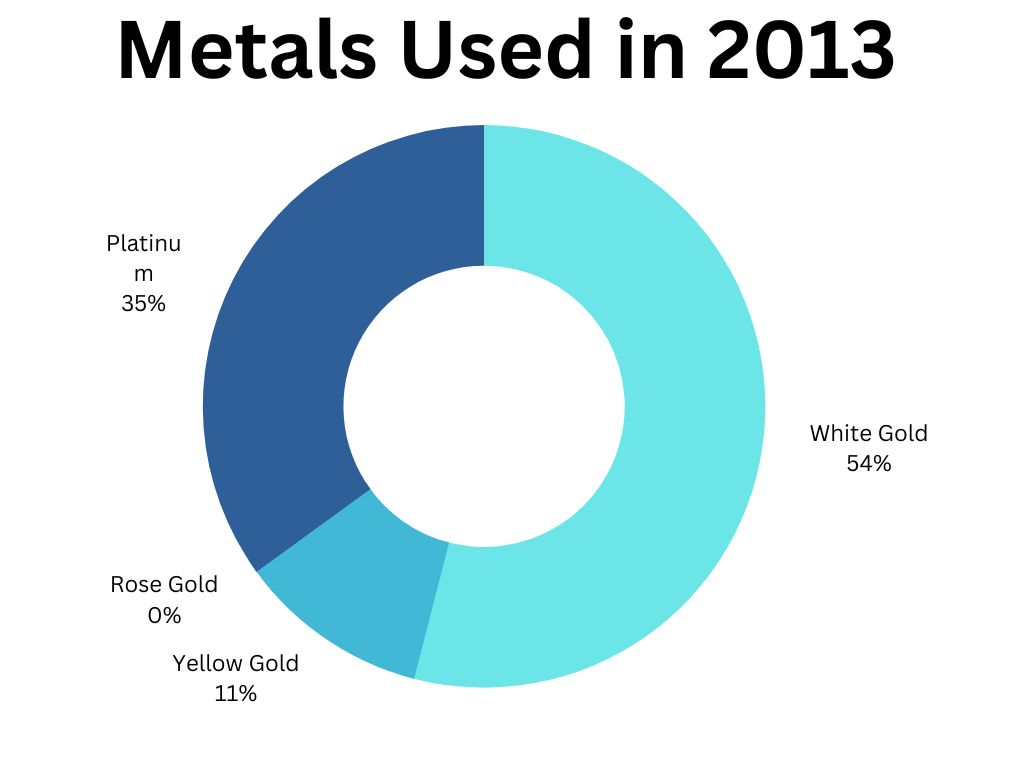
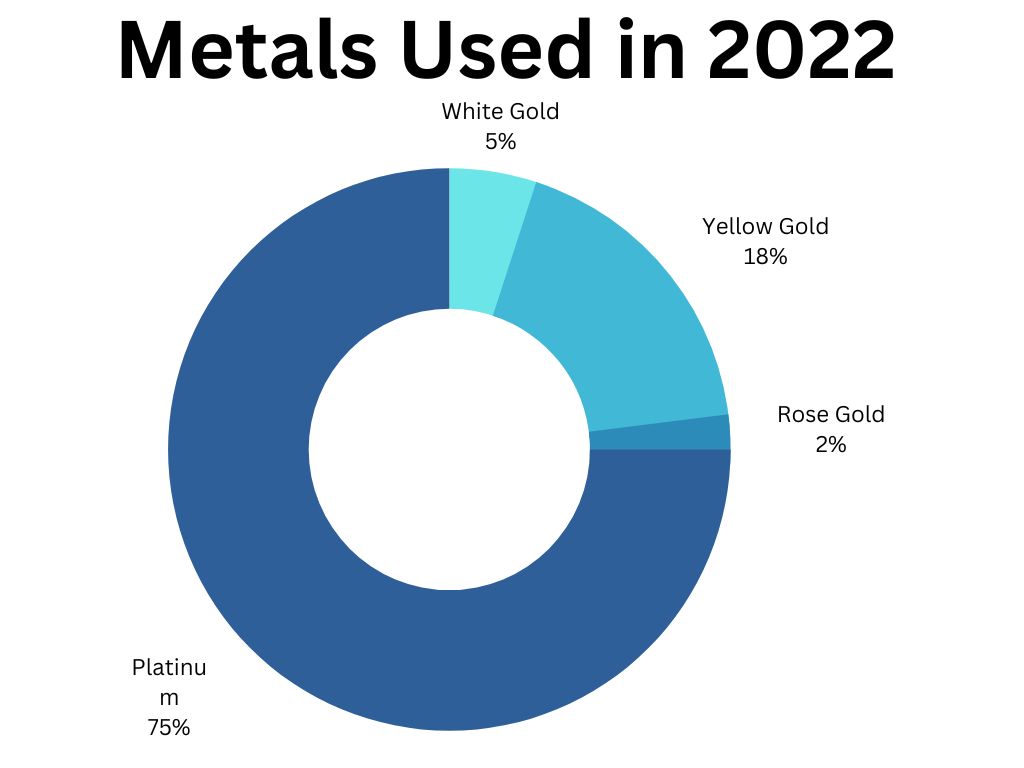
Above: Breakdown of metals used for engagement rings in 2013 vs 2022
The Rise and Fall of Halo Engagement Rings
Halo engagement rings have been the mainstay of the past decade. Whilst my memory may not be the best, I swear we only sold one or two halo engagement rings per year before 2010. However, since then their popularity has exploded. That said, I have seen a definite decrease in the amount of halo engagement rings we’re making. Looking at our data, 2016 is the year that the halo engagement ring style peaked in popularity, and they have been going down ever since. However, another “halo” trend it definitely taking hold – and that is the “hidden halo” – which is essentially diamonds set into the under-bezel of the diamond setting – hidden when view from the top, hence the name.
View this post on Instagram
Above: A halo engagement ring.
Diamond Shapes
This trend comes as no surprise, but from 2013 to 2022, the share of engagement rings with a round brilliant and cushion cut as the main stone has remained fairly steady. However, the big drop has been in princess cuts, with their 28% share in 2013 dropping to a mere 5%. The princess cut share has been replaced by ovals – up from 0% in 2013 to 12% in 2022 and pears, up from 3% in 2013 to 10% in 2022.
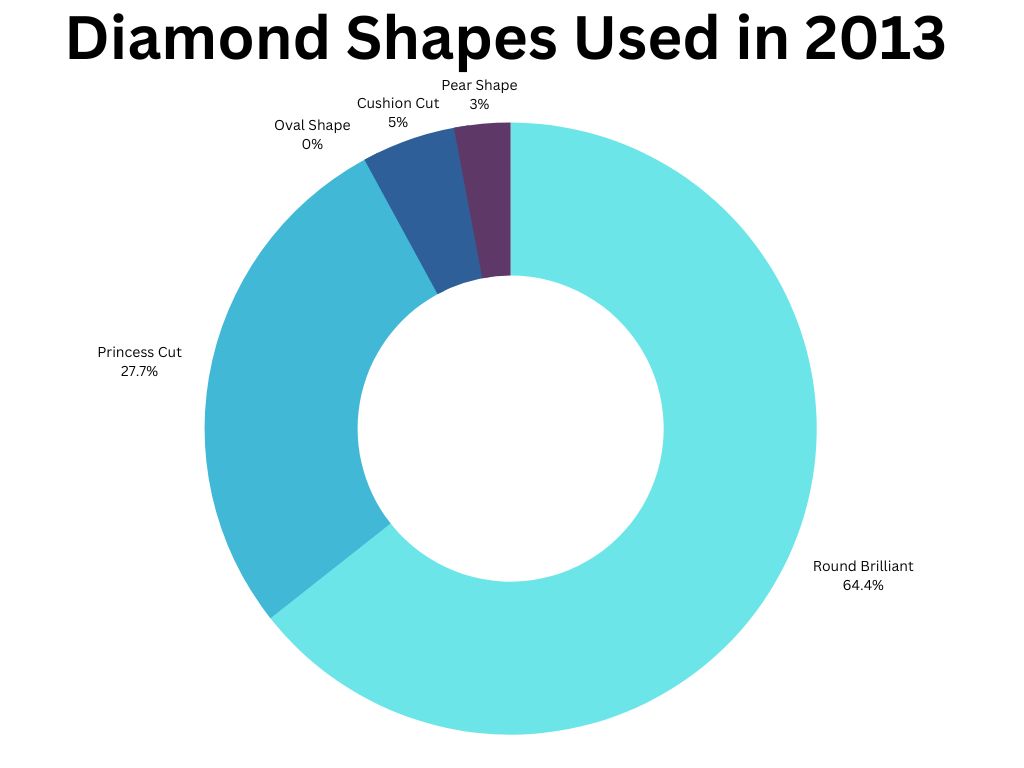
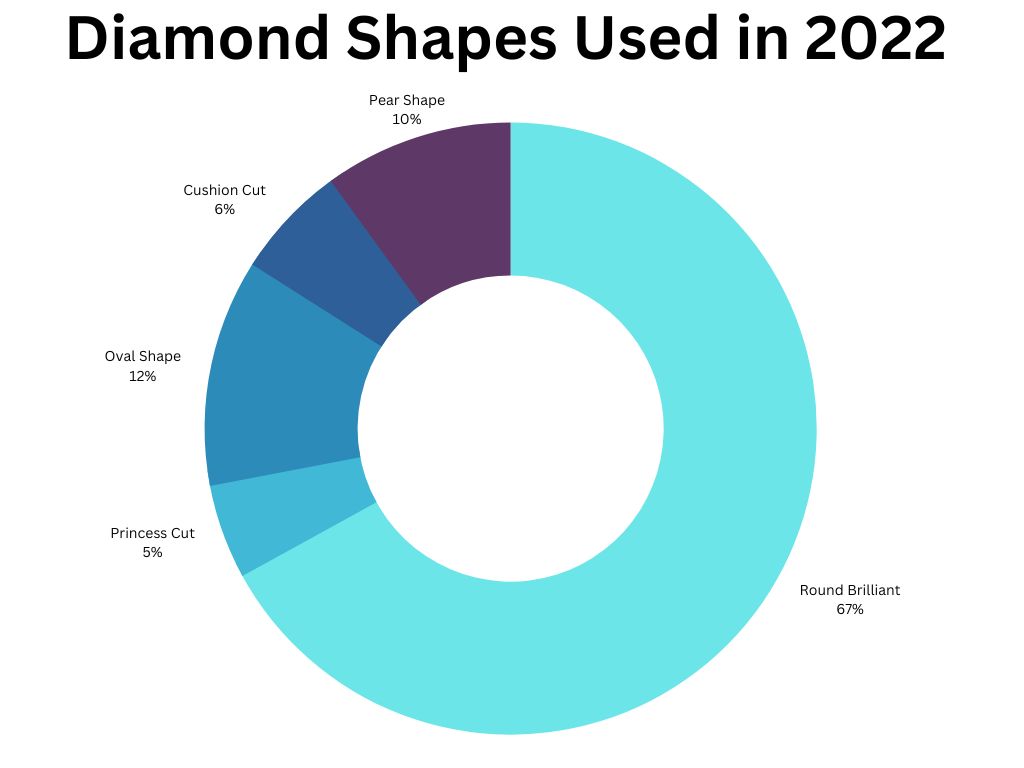
Above: Breakdown of diamond shapes used for engagement rings in 2013 vs 2022
The Rise of Custom Design
Prior to the rise of CAD/CAM to produce engagement rings, jewellers had to hand-sketch designs using pencils and paint, give that design to a bench jeweller who would then either handmake it or hand carve a wax model and then cast it. Nowadays, jewellers can design engagement rings, and any other type of jewellery using CAD, 3D print it, show the customer a model and then cast it.
Whilst some say this is a much more streamlined and easier process that merely reduces the time, especially a bench jeweller’s time, I think there are three simple reasons why custom design with CAD/CAM has gained so much in popularity:
- Consumers are overloaded in terms of what they see online. From social media to online jewellers, it is not uncommon for a would be bride to view hundreds, if not thousands of ring designs online before buying an engagement ring. This pretty much renders a single jeweller’s online catalogue of say 100 designs pretty much useless as consumers have a much wider range available and know that their preferred jeweller can produce what they want with relative ease.
- The CAD/CAM process is a lot more consumer friendly than the old-fashioned way of jewellery design. From photo-realistic renders to printed 3D models and augmented reality, the CAD/CAM process very much brings as much of the “try before you buy” service to custom design.
- The cost of 3D printers has gone down significantly. In 2014, our first 3D printer cost over A$30,000 – now there are many available on the market that cost less than A$1,000. In addition to this, many bench jewellers have upskilled and are now proficient in CAD and the resins used to print and cast have advanced to a point where they are just as easy to cast as wax.
This has all resulted in a huge rise in custom design. In 2013, when we just started offering CAD engagement rings, only 15% of our engagement rings were custom designed. Fast forward to 2022, and a huge 75% of our engagement rings were custom designed.
View this post on Instagram
Above: CAD/CAM has certainly given rise to some interesting designs.
The Rise of Lab-Grown Diamonds
We only started offering lab grown diamonds in late 2021, but anecdotally, their popularity is exploding. Data from Tenoris shows that they hold an equal share in units sold compared to their natural counterparts. That said, as I’ve written about before, their price decline will also see them relegated to non-engagement jewellery as well as lower priced engagement rings. In August, Rapaport wrote about the decline in lower quality natural diamonds, which may mean that lower quality natural diamonds – those being sold by jewellery chains such as Michael Hill, are being replaced by lab grown diamonds.
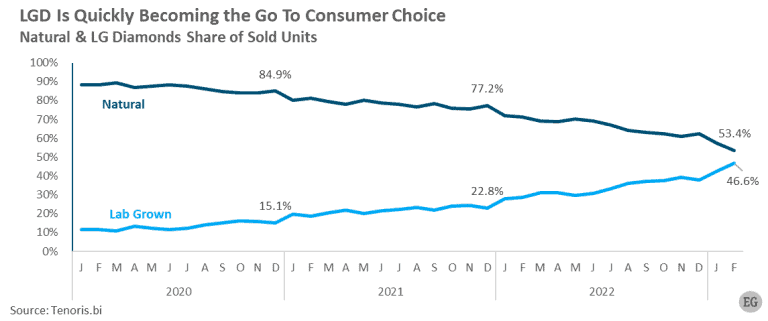
Above: Natural vs lab grown market share in units sold.
In summary, engagement ring trends emerge over years – not months. Some are influenced by price, such as the rise in popularity of lab grown diamonds and platinum, but some are influenced by social media and other media. In the end, these trends tend to come and go, like we saw with halo engagement rings. However, traditional diamond shapes such as the round brilliant and engagement ring styles, such as a simple four or six claw solitaire will always remain timeless, unaffected by the latest trends or styles.